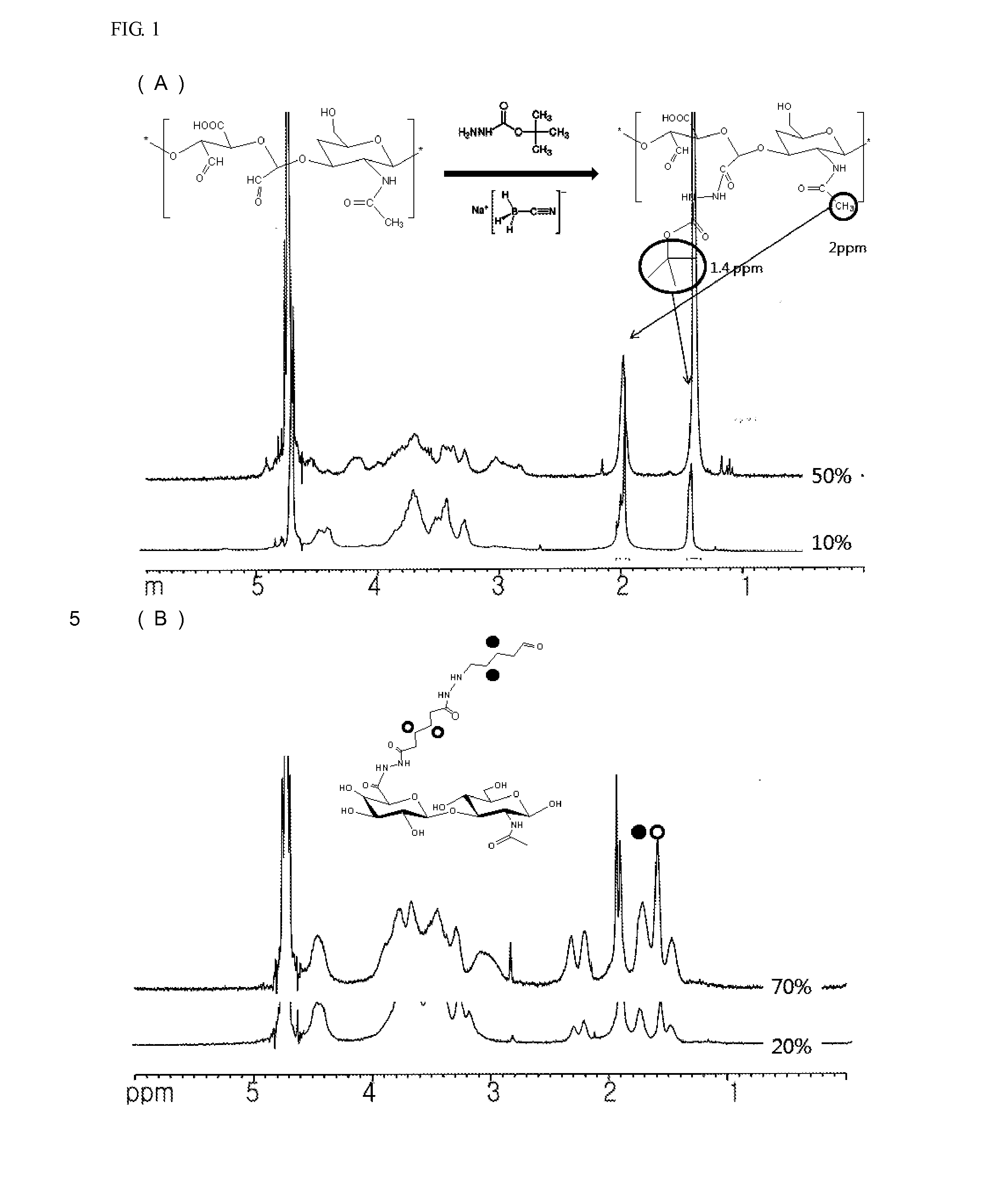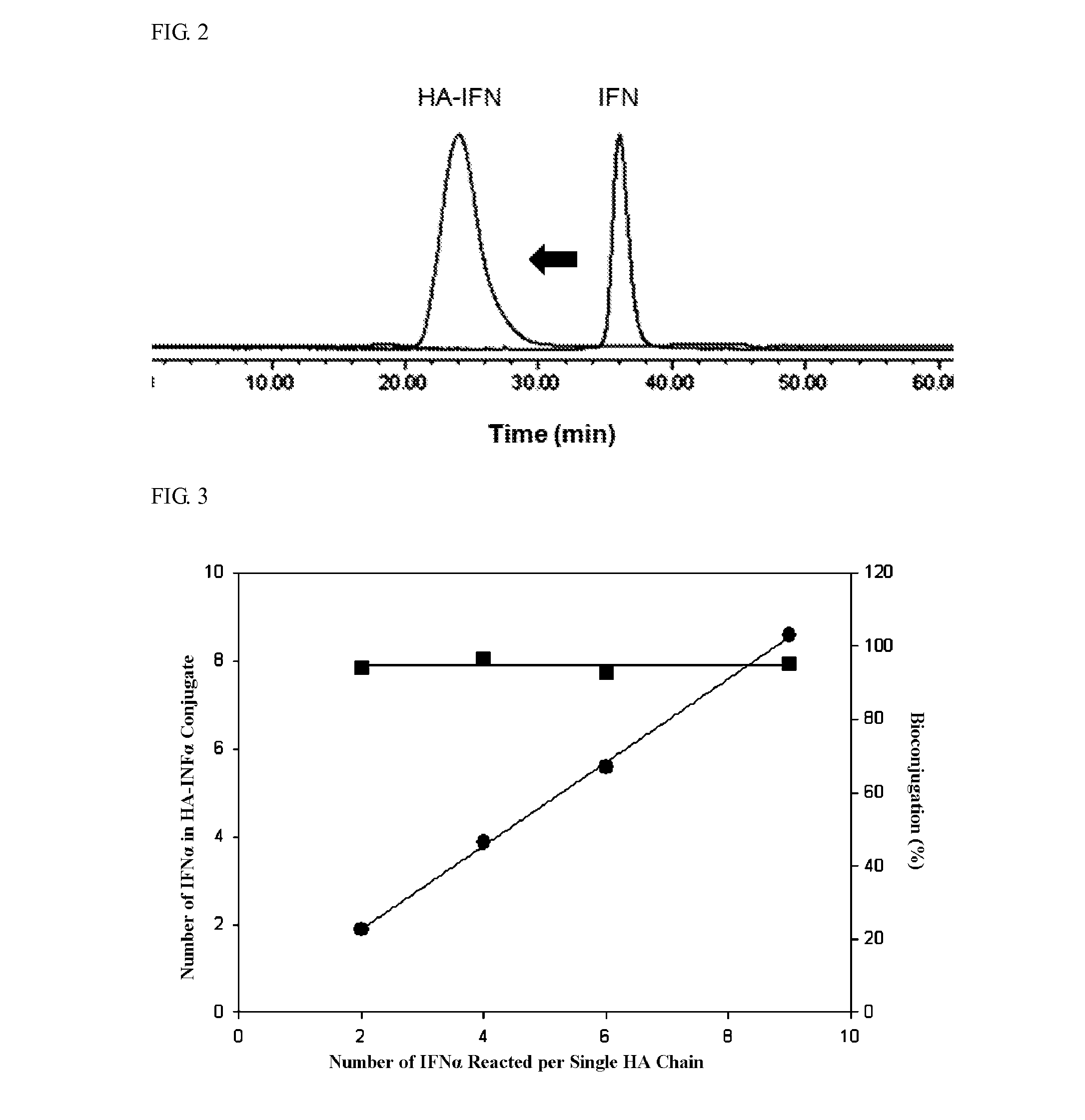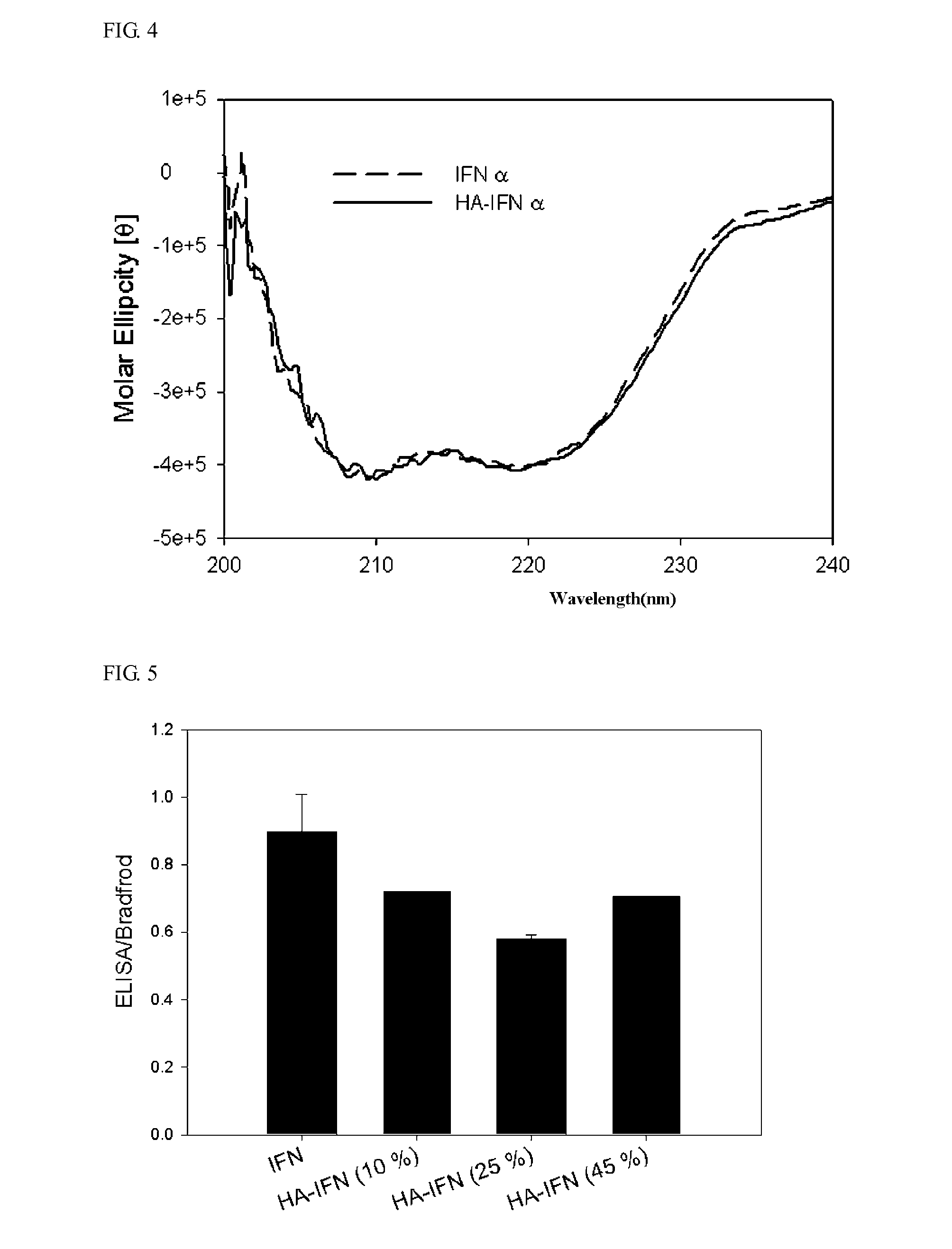Hyaluronic acid-protein conjugate and method for preparing same
- Summary
- Abstract
- Description
- Claims
- Application Information
AI Technical Summary
Benefits of technology
Problems solved by technology
Method used
Image
Examples
example 1
Preparative Example 1
Preparation of HA-Aldehyde Derivative
[0067]Hyaluronic acid (HA) (MW=6.4 kDa, 35 kDa, 100 kDa, 230 kDa) was dissolved in water at a concentration of 10 mg / ml, and sodium periodate was added one time per mole of an HA unit. Thereafter, the resulting mixtures were reacted for 2 hours, 6 hours, and 12 hours, respectively, under a dark condition. The reaction solution was then purified through dialysis against distilled water, and lyophilized for 3 days to obtain HA-aldehyde derivatives having different substitution rates.
example 2
Preparative Example 2
Preparation Of HA-Aldehyde Derivative
[0068]Hyaluronic acid (HA) (MW=6.4 kDa, 35 kDa, 100 kDa, 230 kDa) was dissolved in water at a concentration of 5 mg / ml, and adipic acid dihydrazide (ADH) was added at 20 molar excess of an HA unit. Thereafter, the resulting mixture solutions were adjusted to pH 4.8 using HCl, and stirred for 30 minutes. N-(3-dimethylaminopropyl)-N′-ethylcarbodiimide (EDC) hydrochloride (Mw=191.71) was added to the mixture solutions at four molar excess of an HA unit. Then, the resulting mixture solutions were reacted for 3 minutes and 2 hours, respectively, while maintaining a pH value at pH 4.8. Subsequently, the reaction solutions were purified through dialysis against distilled water, and lyophilized for 3 days to obtain HA-ADH derivatives having different substitution rates. Each of the prepared HA-ADH derivatives was dissolved in a sodium acetate buffer solution (pH 5.2) at a concentration of 10 mg / ml, and glutaraldehyde was then added a...
experimental example 1
Analysis Of Substitution Rate Of HA-Aldehyde Derivative
[0069]The HA-aldehyde derivative prepared in Preparative Example 1 was dissolved in a sodium acetate buffer solution (pH 5.2) at a concentration of 5 mg / ml, and tetrabutyl carbazate (TBC) and sodium cyanoborohydride (NaBH3CN) were added at five molar excess of an HA unit. The resulting mixture solution was then reacted for 24 hours. The reaction solution was dialyzed against distilled water, and then lyophilized for 3 days to analyze a substitution rate of aldehyde using 1-H-NMR (DPX300, Bruker, Germany).
[0070]As a result, it was revealed that three methyl peaks of TBC indicating 9 hydrogen atoms were observed at δ=1.2 to 1.4 ppm, in addition to peaks of HA on the 1H-NMR spectra of the HA-TBC derivative prepared in Preparative Example 1, as shown in FIG. 1. For quantitative analysis, the methyl resonance of acetamido moiety of HA at δ=1.85 to 1.95 ppm was defined as an internal standard. The substitution rate of the HA-aldehyde ...
PUM
| Property | Measurement | Unit |
|---|---|---|
| Fraction | aaaaa | aaaaa |
| Fraction | aaaaa | aaaaa |
| Mass | aaaaa | aaaaa |
Abstract
Description
Claims
Application Information
 Login to View More
Login to View More - R&D
- Intellectual Property
- Life Sciences
- Materials
- Tech Scout
- Unparalleled Data Quality
- Higher Quality Content
- 60% Fewer Hallucinations
Browse by: Latest US Patents, China's latest patents, Technical Efficacy Thesaurus, Application Domain, Technology Topic, Popular Technical Reports.
© 2025 PatSnap. All rights reserved.Legal|Privacy policy|Modern Slavery Act Transparency Statement|Sitemap|About US| Contact US: help@patsnap.com



